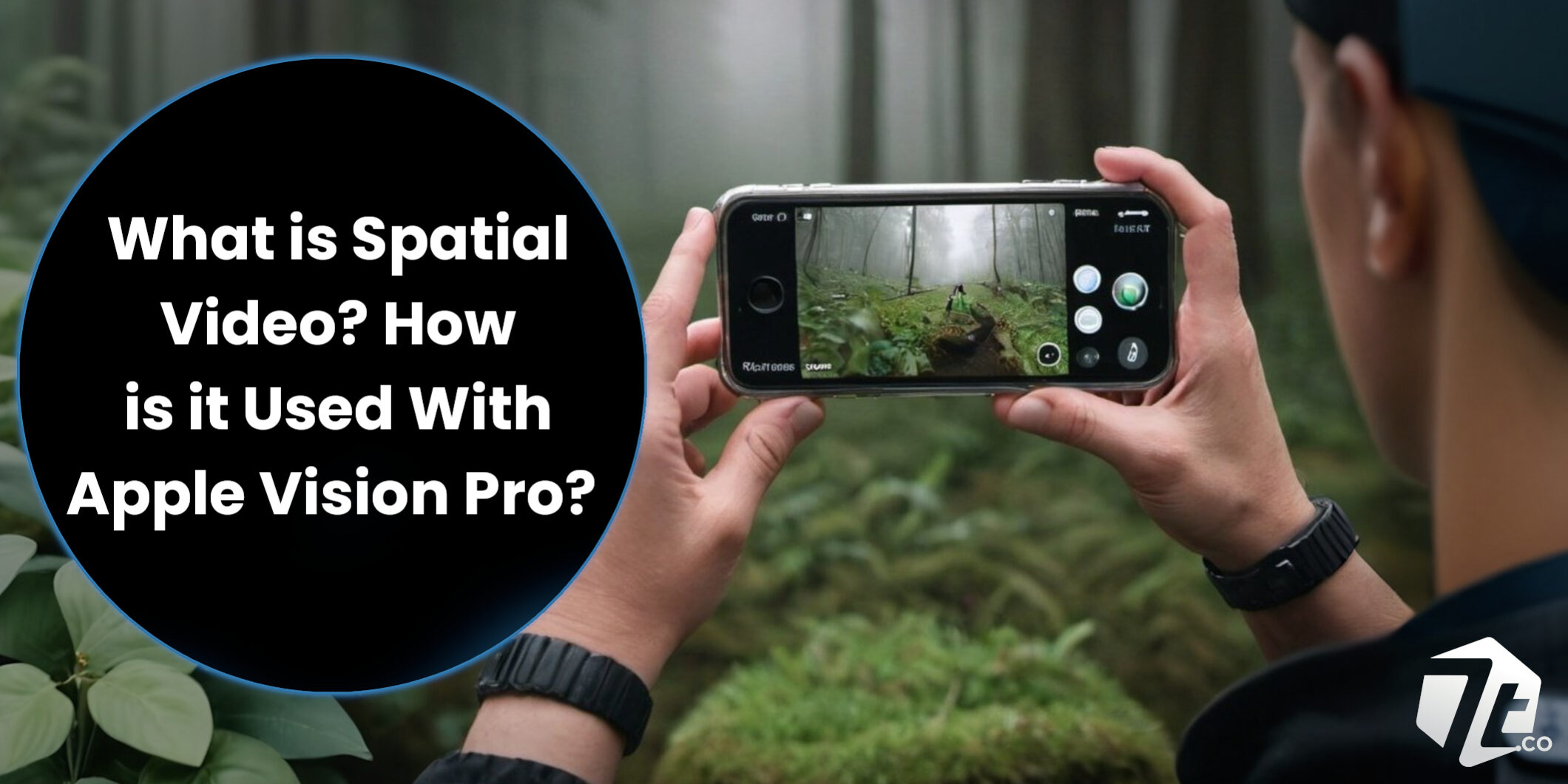The tech sphere has been at the center of lots of buzz recently; first with AI splashing down into the mainstream and more recently, with the arrival of the Apple Vision Pro virtual reality goggles which are transforming nearly every industry with immersive spatial video technology. But what is spatial video? How does it differ from “normal” video? And how is spatial video being used in conjunction with Apple Vision Pro?
What is Spatial Video – Definition and 3D vs Spatial
Also known as “immersive video,” spatial video delivers a rich and dynamic three-dimensional experience of a location and the objects that are contained within.
Spatial video creates six degrees of freedom — also called 6DOF — which allows the user to shift their position within an environment; the perspective in the video footage shifts accordingly. In this way, spatial video goes beyond mere 3D video whereby objects appear to pop out of a flat plane, but offer no shift in perspective.
The Apple Vision Pro uses spatial video to deliver a dynamic, interactive user experience. It’s innovative technology that many surmise will be a tech industry inflection point, especially when you consider the many potential uses of spatial VR footage.
Spatial Video vs 3D Video Technology – User Experience and File Format
With the Apple Vision Pro making headlines worldwide, many are left considering spatial video vs 3D video; specifically, how the technology differs between these two forms of video and how Apple Vision Pro is using this tech.
From the user’s perspective, 3D video features a three-dimensional perspective of an environment with people and objects that seem to pop out of the scene. But this scene is typically observed from a single perspective; everything tends to fall apart, so to speak, if the viewer “walks” into the scene, thereby changing their perspective of the environment.
Spatial video goes one step beyond 3D video by allowing the user to shift their perspective. This makes it possible to walk through an environment and even interact with people and objects that are contained therein.
From a technical perspective, the file format is the key difference between spatial video vs 3D video. Spatial video uses a new file format called MV-HEVC. This spatial video format reduces file size while simultaneously adjusting the video’s depth perception to create a three-dimensional environment that allows for shifts in the user’s perspective.
3D video file formats include STL, OBJ, DAE and FBX, but none of these formats can accommodate a shift in the user’s perspective beyond a 360 spin.
How Are Businesses Using Spatial Video? – Use Cases
Spatial video and Apple Vision Pro uses are many and varied. Businesses in virtually every industry are using spatial video to generate Apple Vision Pro apps. These apps serve a variety of functions, from providing a dynamic, interactive three-dimensional tour of a location, to creating an engaging and immersive educational experience whereby the viewer can be part of the action.
Apple Vision Pro use cases are elevated to an entirely new level when you add artificial intelligence to the mix. By combining spatial video with AI technology, you can create an environment that changes and shifts in reaction to a user’s actions and inputs. In short, AI-powered spatial video is dynamic, with an environment where the user is more than just a viewer — they’re an active participant; an integral part of a changing, evolving scene. As such, there’s really no limit when it comes to spatial video use cases. Here’s a look at how Apple Vision Pro apps are being used across several industries and business spaces.
Industry
Technology Overview
Travel and Tourism
Immersive tours of vacation destinations, vacation homes, historical sites and other tourist attractions.
eCommerce
Engaging shopping experiences, such as taking shoppers on a virtual shop walk-through or 3D, 360-degree views of a product or garment.
Real Estate
Real estate tours of properties that are available for sale or for lease.
Healthcare and Medicine
Dynamic, 3D medical imaging for practicing procedures and diagnostic work in the healthcare space.
Marketing
Engaging visual imagery for marketing everything from premium seats at an upcoming concert or showcasing a new sporting venue, to providing a close-up look at custom garments or the latest and greatest piece of new technology hardware.
Education
Interactive educational environments, ranging from digital recreations of historical events to dynamic lesson presentations.
Training
Training materials with interactive scenarios and simulations that engage individuals with dynamic environments that change in response to the user’s actions.
Entertainment
Concerts, theatre performances, festivals and sporting events can be captured with an iPhone 15 Pro and viewed on Apple Vision Pro for a dynamic, interactive experience that includes front row views and backstage pass-worthy access.
Apple Vision Pro apps are predicted to be a game-changer thanks to the fact that you can capture video footage using an iPhone 15 Pro. This represents a vast improvement over the alternative — paying tens of thousands of dollars (or more) to hire a professional camera crew to film an environment or event — which has been the status quo until just recently.
The Apple Vision Pro’s ability to use iPhone 15 Pro footage has empowered businesses both large and small, leading to some exciting opportunities in the realms of education, entertainment, healthcare and marketing, just to name a few. Companies are now updating their extended reality (XR) strategies to include spatial video and Apple Vision Pro technology.
Harness the Power of Spatial Video With Apple Vision Pro App Development
Our world-class team of Dallas Apple Vision Pro developers can help you harness the power of immersive spatial video with an engaging and dynamic three-dimensional video capture designed to elevate your organization with the latest technology. In addition to developing Apple Vision Pro apps, we also specialize in artificial intelligence development. This means we’re well-positioned to create hyper-innovative Apple Vision Pro apps with spatial video and AI technology.
At 7T, we believe in a problem → solution approach to AI-powered Apple Vision Pro app development. We begin by identifying pain points and challenges within your organization; then, we develop a value-generating solution with AI, spatial video and other innovative technologies that align with your business strategy. This problem → solution approach is the key to our clients’ success.
7T is based in Dallas, with additional locations in Houston, and Charlotte, NC. But our clientele spans the globe. If you’re ready to learn more about spatial video and how your organization can harness the power of Apple Vision Pro, contact 7T today.










